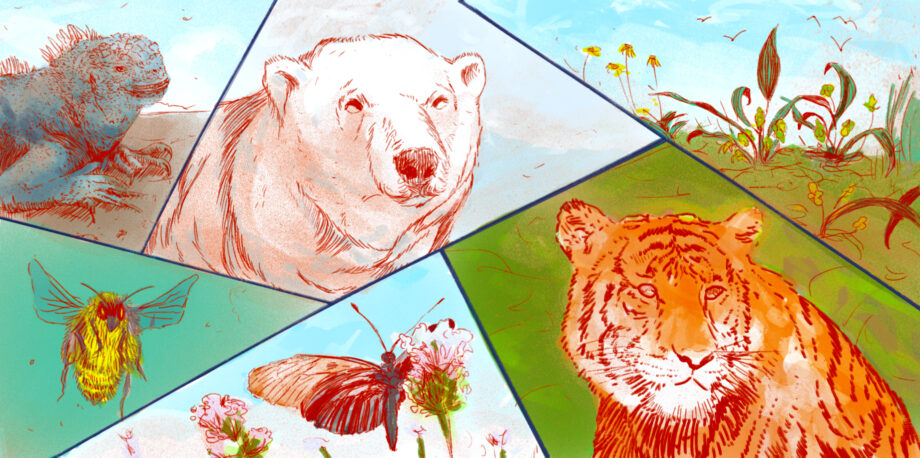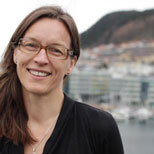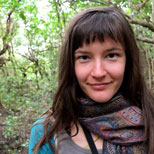March 6, 2020 — Everyone is saying it: 2020 is the “super year” for biodiversity. And the timing is perfect.
Momentum has been building with two major global assessment reports just in the past year, from the Intergovernmental Panel on Climate Change (IPCC) and the Intergovernmental Science-Policy Platform on Biodiversity and Ecosystem Services (IPBES), giving stark warnings to humanity about the mounting risks associated with ongoing climate change, environmental degradation and biodiversity loss. And with staggering figures, such as those reporting more than 1 million species at risk of extinction, the IPBES report caused ripples far beyond the academic community.
These messages are now amplified by public engagement, spearheaded by the global Fridays for Future and Extinction Rebellion movements that have taken the world by storm. The collective acknowledgment around the issue of biodiversity loss is so great that in January the world’s economic elite at the World Economic Forum in Davos declared the loss of biodiversity one of the five biggest threats to the world’s economies.
The good news is that 2020 offers a key opportunity to turn all this around.
During the 15th Conference of the Parties of the United Nations Convention on Biological Diversity (CBD) meeting in Kunming, China, in October, the CBD will set out its strategy for the next decade of global biodiversity governance. In force since 1993, the CBD continues to be a historic landmark of multilateral environmental agreements, bringing 196 countries together in a framework convention with a strategic plan that is revised every 10 years.
The draft of new CBD strategy, known under the preliminary name “Zero Draft of the Post-2020 Global Biodiversity Framework,” was released in January. Over the crucial months ahead, the details of this report outlining the world’s biodiversity goals for the next decade will be refined and negotiated in a series of meetings all around the world. Hopes are high that this new framework will have taken a lesson from our collective failure over the past decade to progress on the current targets and will improve on its predecessor, the Aichi Biodiversity Targets.
Below are seven ways the scientific community can work with governments and other stakeholders leading up to, and in the implementation of, the post-2020 agenda.
1. Set SMART global goals, with success criteria adapted to local needs and conditions.
The new global goals must be ambitious, but they must also be concrete and measurable, with defined, relevant and evidence-based measures of success. These kinds of specific and timebound goals are often called “SMART” — Specific, Measurable, Achievable, Realistic and Timely.
The Aichi targets and associated measures of success were often global, making local implementation and monitoring a challenge. The new goals must adapt targets and indicators to local systems and conditions — both in terms of capturing natural variation and in terms of meeting local community needs and challenges. The scientific community has a big role to play in defining these goals and measures and ensuring that the necessary knowledge and data is widely available.
2. Use knowledge-based monitoring and reporting.
Credible monitoring and reporting are vital to assessing the effectiveness of biodiversity policy and, more widely, to successfully preserving and restoring nature while guaranteeing human well-being. It is at local levels that species live and die, and that local communities make their livelihoods. Therefore, monitoring and reporting systems must be able to capture local consequences of policy implementation (or lack thereof) and meaningfully reflect local ecological and societal conditions.
Credible reporting needs objective data at the relevant scale — and science, local traditional knowledge and modern technology can help develop good indicators, collect and interpret data, and co-design SMART reporting systems that meet local, regional, national and international needs.
3. Treat independent knowledge as a shared asset.
An important ideal underpinning the work of the IPCC and the IPBES is that knowledge should be available to everyone, value neutral and independent. The idea is that agreement on the facts is the best starting point for political negotiations, decisions and solutions. To achieve this, we need to maintain a clear understanding of the different roles and responsibilities of researchers and decision-makers.
In practice, this means that while politicians and others can identify societal needs and guide research agendas, scientists must be able to do and communicate their work freely. And scientists must communicate their findings to policy- and decision-makers clearly and concisely so they can easily weigh different considerations. The IPBES and IPCC processes have been successful at creating collaborations across disciplines and sectors — incorporating multiple types of evidence, including indigenous and local traditional knowledge — and those working on the post-2020 agenda should look to these as inspiration.
4. Build trust through openness.
Today, achieving independent knowledge that everyone can agree with, at a time when fake news and echo-chamber thinking are gaining momentum, is an uphill battle. Yet it is one of the most important things we can do for our democracies and for human rights. Therefore, increasing access to open data sources, along with opportunities to interrogate and compare data, is an essential step toward transparency and trust in science.
The scientific community should continue to actively adopt open science practices, such as those put forth by the open science and FAIR (Findable, Accessible, Interoperable, Reusable) data movements, to share knowledge on nature and nature’s contributions to people in order to facilitate sustainable social development. It is essential to develop open, accessible and interoperable databases; foster open access publishing; and implement open science thinking where science and policy intersect.
5. Remember that nature is the basis for everything.
A key point in the post-2020 agenda is “mainstreaming” — acknowledging that nature and nature-based solutions are the foundation of social and economic development. Nature therefore cannot be seen or treated as one among many competing special interests. Climate and biodiversity challenges that manifest themselves on a global scale arise because of actions and decisions made locally and regionally, and often within a single sector. Thus, those who make the individual decisions often do not see the big picture — and we end up with “death by a thousand cuts.”
We must stop treating each individual intervention in isolation and instead see decisions in a broader context, appropriately managing trade-offs and feedbacks. Increasing collaborations across disciplines and sectors — including the humanities and social sciences as well as knowledge systems beyond academia — within biodiversity research and decision making is essential to promote biodiversity mainstreaming.
6. Heed the demands of the youth.
Today’s youth understand the reality of global sustainability challenges better than most adults and are the bearers of commitments and efforts made now toward the global environment and sustainable development. Governments and educational institutions must urgently adapt to include young people in political and decision-making processes at all levels.
The post-2020 agenda appropriately explicitly acknowledges the importance of youth participation in biodiversity governance.Higher education institutions must be at the forefront in developing cross-disciplinary courses and capacity-building that prepare young people for a future under global change and increase their ability to participate fully at the decision table. Research-based education also needs to be more transdisciplinary in order to build the capacity needed to solve complex problems.
7. Take it a step further.
The academic communities are already contributing significantly to the post-2020 agenda. The landmark IPCC and IPBES reports are proof of the impact of compiling rigorous research into a unified global knowledge base. The processes for producing those reports explicitly promote many of the perspectives argued above, notably scientific rigor, comprehensiveness, openness and inclusiveness.
Climate scientists, biologists, social scientists and academics within the humanities are already highly engaged. The year ahead offers an exciting and important opportunity to take all of this a step further. In developing the post-2020 agenda, we can build systems and platforms to develop, test and implement new goals, indicators and monitoring and reporting systems.
At the same time, the academic community educates tomorrow’s experts, leaders and citizens. An increase in direct engagement with policymaking through cross-sectoral initiatives, collaborations and participation in scientific and technical advice panels will further increase the impact of the scientific community on policy.
We Can Only Succeed Together
These are truly exciting, if daunting, times for humanity and for our Earth. We are facing unprecedented global challenges, but we are also better equipped than ever to meet them. Neither scientists, policymakers, businesses, indigenous and local communities, nor youth can solve these challenges alone. We can only succeed together. This means that humanity’s most urgent task right now is to find good ways to work together to share, assess, develop and translate knowledge into action.
This is, in essence, the aim of the U.N.’s Sustainable Development Goal 17: effective partnerships to achieve goals and balance trade-offs. We must put our best available knowledge to good use for people and planet at the same time we do our best to bravely and critically assess our progress toward the goals the world needs. This, no less, is what the CBD post-2020 agenda must achieve.
Editor’s note: The views expressed here are those of the author and not necessarily of Ensia. We present them to further discussion around important topics. We encourage you to respond with a comment below, following our commenting guidelines, which can be found on this page. In addition, you might consider submitting a Voices piece of your own. See Ensia’s Contact page for submission guidelines.
Related Posts
Ensia shares solutions-focused stories free of charge through our online magazine and partner media. That means audiences around the world have ready access to stories that can — and do — help them shape a better future. If you value our work, please show your support today.
Yes, I'll support Ensia!




